Hola. Mi nombre es El Transhumanista.
Me encantan las tecnologías emergentes y en evolución , y por eso...
Actualmente estoy inmerso en el estudio de IA (particularmente IA generativa y motores de razonamiento) y big data .
Me dedico al uso de JavaScript, incluso escribo scripts de usuario de vez en cuando.
Mi mejor script de usuario hasta ahora es SearchSuite ...
SearchSuite ofrece un mayor control sobre los resultados de búsqueda de Wikipedia, como la activación o desactivación de funciones para ordenarlos, para presentar los resultados uno por línea y más. Si bien parece funcionar bastante bien, definitivamente hay margen de mejora. Se aceptan comentarios y sugerencias.
Por cierto, la mayoría de los scripts en los que he estado trabajando son para construir y ampliar esquemas...
Me interesa todo el conocimiento, especialmente cómo organizarlo para poder encontrar lo más relevante en cada momento.
He estado en Wikipedia desde el otoño de 2005, y he estado trabajando principalmente en la estructura de Wikipedia y en sus sistemas de navegación de conocimiento durante ese tiempo.
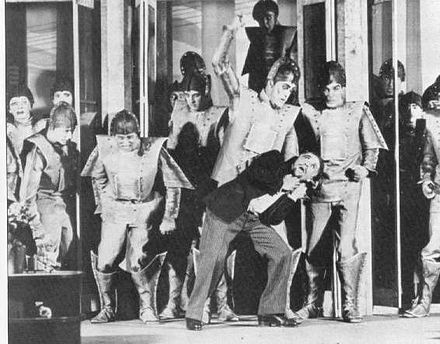




.jpg/440px-WHY_AM_I_HERE_(2444125312).jpg)
_Kitchen_interior_with_maid_1563.jpg/440px-Jean-Baptiste_de_Saive_(circle)_Kitchen_interior_with_maid_1563.jpg)




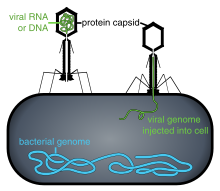
.jpg/440px-Inductive_charging_of_LG_smartphone_(2).jpg)



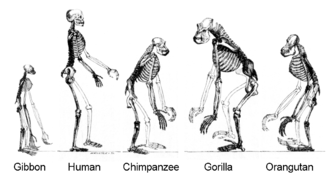
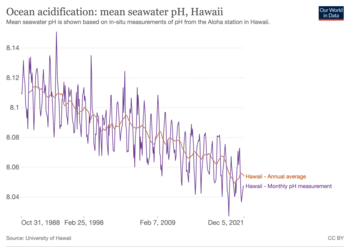

_relative_to_baseline_-_fcosc-01-615419-g001.jpg/440px-Summary_of_major_environmental-change_categories_expressed_as_a_percentage_change_(red)_relative_to_baseline_-_fcosc-01-615419-g001.jpg)

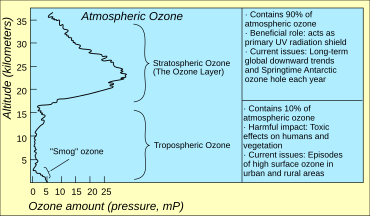

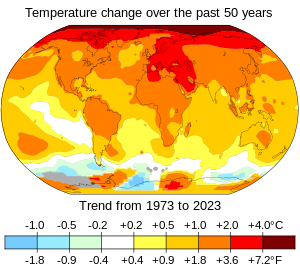

_relative_to_baseline_-_fcosc-01-615419-g001.jpg/440px-Summary_of_major_environmental-change_categories_expressed_as_a_percentage_change_(red)_relative_to_baseline_-_fcosc-01-615419-g001.jpg)

.jpg/440px-Field_Hospital_Visit_(49746816753).jpg)
.jpg/440px-Operação_Hymenaea,_Julho-2016_(29399454651).jpg)



_(14576727409).jpg/440px-Pioneers_in_South_Africa_(1914)_(14576727409).jpg)
¿Tienes alguna pregunta sobre algún tema y no encuentras respuesta?
Considere preguntarlo en el mostrador de referencia de Wikipedia .

I just want to thank you for building on my tip and making it a true wikipedia tip of the day. I'm still learning a lot about how to do things around here, so your help was greatly appreciated! Keep up the great work, and keep on Going for it!
<O.o --The Prophet Wizard of the Crayon Cake 01:45, 27 November 2006 (UTC)
Cool signature Kamope · talk · contributions 12:58, 22 January 2007 (UTC)
Thanks. The Transhumanist 05:52, 23 January 2007 (UTC)
Thanks so much for the hints in your userpage tutorial. ![]() . I am a new user and familiar with HTML markup, but not so with Wikimark up. Your userpage tutorial really helped! Real96 06:14, 23 January 2007 (UTC)
. I am a new user and familiar with HTML markup, but not so with Wikimark up. Your userpage tutorial really helped! Real96 06:14, 23 January 2007 (UTC)
How can I sum the above up....? Oh yes:
as a near- noob, this is by far the most detailed and useful article on wikipedia for me! Excellent! I really wish I had a user page like this after two years...Snailey! 15:42, 14 March 2007 (UTC)
TT, my friend, my mop would never have been gained without your incredible expertise. My kindest regards to you, and drop by as often as possible! Now, a little token of my appreciation...

My kindest possible regards,
Anthony 21:38, 6 May 2007 (UTC)
Hello The Transhumanist, (Hold on, can I say that or is it "Hello Transhumanist")
I was going to give you an award but there wasn't one good enough, so I made one better than any that has ever been seen before - This message. Yes, yes, I know, you don't think your worthy of it, but I assure you, you are the only one good enough for it - Pheonix 19:34, 12 August 2007 (UTC)
Hi there Trans Face! X××x××pink×jellocreature××x××X (talk) 01:36, 20 December 2007 (UTC)
X××x××pink×jellocreature××x××X (talk) 01:36, 20 December 2007 (UTC)
You deserve a barnstar for your efforts. I can't think of anyone who has contributed more to Wikipedia, except maybe Jimbo. I'm not sure where to put this on your frontpage, so here it is:
Hi There First id like to thank you immensly for your pages about creating a decent userpage!! They are great and I would be lost without them!! Just one question, On my userpage i have a small welcome banner up the top. How do I make this text larger and change the font? Sorry if you have already covered this somewhere. Thanks in advanceCstubbies (talk) 12:40, 19 January 2008 (UTC)
I think you need recognition for doing the job of ten other editors, and doing it out of altruism and genuine belief in Wikipedia. Not many editors here have the same good attitude and provide the same service as you - I don't have any specific point to put across, but I thought you should just be prodded and reminded that you do a lot of good around here, in the hope you'll keep it up. Kudos! Seegoon (talk) 17:43, 25 January 2008 (UTC)
Just a note, I've made a minor update to your contributions. To reiterate my edit summary, you put in a tonne of effort there, and you deserve to be credited for it :) Feel free to revert, nonetheless. Regards, AGK (contact) 16:44, 29 February 2008 (UTC)
Hi there TTH, Just wanted to thank you for your labors on this page, which is a great resource for us. Bill Wwheaton (talk) 17:48, 29 February 2008 (UTC)
... because you just gave me the biggest laugh in weeks. Good stuff giving that RfA spammer what-for here. αѕєηιηє t/c 22:03, 1 March 2008 (UTC)
Nice work -- I will withdraw the AfD nom. – ukexpat (talk) 00:55, 15 March 2008 (UTC)
The deletion review was approved for recreation: Wikipedia:Deletion review/Log/2008 March 10. Just letting you know, in case you weren't watchlisting it. I'm not sure what you have to do next to get the old version undeleted though (if that's what you wanted :) Nice catch on rescuing that grouping. -- Quiddity (talk) 00:21, 17 March 2008 (UTC)
Hi Transhumanist, I wanted to note that I saw all of your work on the List of Basic France topics, and I appreciate it! Lazulilasher (talk) 02:12, 8 August 2008 (UTC)
(next page...)
→ Dylan620 (Toolbox Alpha, Beta) 00:26, 1 June 2009 (UTC)
...you need a barnstar for all of the hard work you have put into the WP:WPOOK!
Transhumanist my friend,
It's about time you deserve a barnstar for all your contributions to outlines on Wikipedia, and also for being the promoter that you are for outlines. If it wasn't for you we might not have outlines as they are, so it is my honor to present to you the Special Barnstar because no other barnstar could merit what you do for outlines on Wikipedia. :-) Burningview (talk) 03:42, 8 August 2009 (UTC)
You once said in a AFD: "If you are building a robot, you can start with just the left pinky." I love that. Happy New Year! Jerry delusional ¤ kangaroo 20:34, 31 December 2010 (UTC)
I appreciate you pointing me in the direction of a formatted signature. For some reason I couldn't find any reference to how it is done in the years I have been here. Cheers. ◦◦derekbd◦◦my talk◦◦ 12:16, 4 June 2011 (UTC)
I just wanted to tell you (probably not the 1st ^^ ) that your are an incredible wikipedia member, your userpage is simply amazing and your contribution is...gigantic? huge? Incredible? not for the number edits (still high) but rather over the appropriateness of the things that you have created, especially the outline project. I wont give you another award, you already have billions, but simply a modest "Bravo!". --![]() Offiikart (Talk) 05:23, 21 June 2011 (UTC)
Offiikart (Talk) 05:23, 21 June 2011 (UTC)
Hi, thanks a lot for the barnstar, you are truly a user with whom it is pleasant to interact. I greatly appreciate your help, your tips and you recognition on the work done, even if only very minimal compared to the work you have done.
I think you, more than everyone else, deserve a special recognition. Here is the first Barnstar I ever awarded :
ps. I did put the page alert on my watchlist ![]()
Note to user getting this message: Please respond on Pinkstrawberry02's talk page. If for some reason you cannot, please send them a {{talkback}} and reply on your own talk page. Thanks for your understanding in this manner. See ya around the wiki!
Thank you. The Transhumanist 07:45, 18 January 2015 (UTC)
Thank you. The Transhumanist 06:56, 5 October 2015 (UTC)

Want to let you know the value of your insights & feedback! ![]()
Regards, JoeHebda (talk) 21:53, 19 October 2015 (UTC)
Pony!
Congratulations! For all your hard work on redirect repair at Glossary of North American horse racing and general wikignoming along the way of articles such as Easy Goer, you have received a pony! Ponies are cute, intelligent, cuddly, friendly (most of the time, though with notable exceptions), promote good will, encourage patience, and enjoy carrots. Treat your pony with respect and he will be your faithful friend! We need more wikipedia editors like you! Montanabw(talk) 02:22, 1 November 2015 (UTC)
To send a pony or a treat to other wonderful and responsible editors, click here.
Thanks again :) -- Doc James along with the rest of the team at Wiki Project Med Foundation 03:59, 29 February 2016 (UTC)
Thank you. The Transhumanist 15:31, 28 September 2016 (UTC)
Hi there! I just wanted to let you know that I think your planet outlines are really cool. I have long thought it was a shame that only Wikipedians seem to know about Books or Portals, because they are really great tools for structuring knowledge (while everyone loves diving down the Wikipedia rabbit hole, we could really do with some better content organization). The outlines strike me as a great way to bring that sort content organization to mainspace, where it will actually reach a large number of readers. I notice that I am the first one to edit them besides yourself, and I hope you know that I do so with love.
@RightCowLeftCoast: Thank you. I feel honored. Please keep in mind that I have not been working alone. Credit goes to the nearly 400 editors who came forward to speak up for the keeping of portals. And although the RfC to delete all portals is over, the job of defending portals from deletion is not. For the portal namespace to be retained in the long term, the portals in it will need to be improved to a worthy quality level, otherwise we may see more deletion attempts. This task is far more than a single editor can handle. Fortunately, many editors have come forward to meet the challenge. Working to develop portals and the entire portal system, is a team of 80 editors who are diligently redesigning, upgrading, updating, and maintaining portals. They are the members of the Portals WikiProject, and without them there might be no portals. They are doing a wonderful job, and I am very proud of them. Thank you. — The Transhumanist 17:22, 26 May 2018 (UTC)
thinking-related topics
Thank you for organising a list of thinking-related topics, for Shift work sleep disorder and the index of oral health and dental articles, for your thoughts and efforts regarding portals, and beginnings such as Portal:Thinking/Selected picture, - you are an awesome Wikipedian!
portals
Thank you for your thoughts and efforts regarding portals, for the concept of outlines, for sectional redirects, for articles such as Life Extension Foundation, for service from 2006, including portal philosophy and user page design center, - repeating (1 & 4 June 2009): you are an awesome Wikipedian!
Thank you. I looked, but couldn't figure out what 1 & 4 June 2009 were referring to. Just curious. — The Transhumanist 19:26, 4 June 2018 (UTC)
Moxy, thank you. I'm honored, and I receive this praise for the team, without whom there would be very little progress on portals. They are literally transforming them into something new. I'm glad to be a part of that. — The Transhumanist 18:20, 7 June 2018 (UTC)
You are welcome, formerly Wpgbrown. Nice new name. ;) — The Transhumanist 10:26, 6 July 2018 (UTC)
You have made immense contributions to outlines over the years, and have encouraged many more Wikipedians to follow your lead. The impact of your contributions are great. Keep doing the good work! — Preceding unsigned comment added by Ambujshukla2004 (talk • contribs) 19:16, 2 November 2019 (UTC)
Los siguientes proyectos hermanos de la Fundación Wikimedia proporcionan más información sobre este tema: